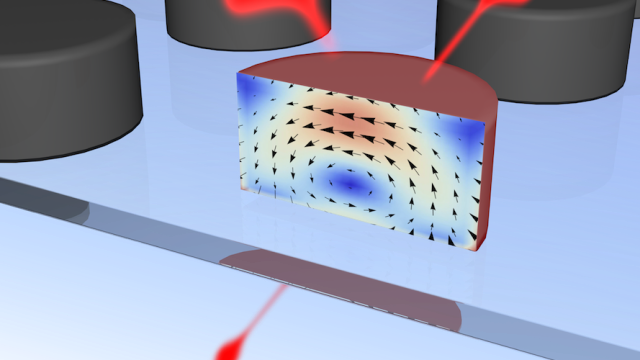With the future of computing looking increasingly likely to become light-based, it pays to work out how to make the switching of light as efficient as possible. Enter tiny silicon discs, which have now been shown to be the fastest ever optical switches at the nanoscale.
Created by a team of researchers from Lomonosov Moscow State University and the Australian National University in Canberra, the 250-nanometre silicon discs are capable of handling photons much like transistors deal with electrons, amplifying and switching light instead of electricity. In a series of experiments, the team has shown that the tiny devices can switch optical pulses at femtosecond rates. For some context, a femtosecond is a one millionth of one billionth of a second, and switching speeds of that rate equate to the transmission of hundreds of terabits per second. Which is fast. PhysOrg explains how it works:
The operation of the all-optical switch created by MSU researchers is based on the interaction between two femtosecond pulses. The interaction results from the magnetic resonance of the silicon nanostructures. If the pulses arrive at the nanostructure simultaneously, one of them interacts with the other and dampens it due to the effect of two-photon absorption. If there is a 100-femtosecond delay between the two pulses, the interaction does not occur, and the second pulse goes through the nanostructure without changing.
The research, which is published in Nano Letters, doesn’t do much in isolation — but it promises great things down the line. While electrical transistors are already shrunken down to the nanometre scale, optical switching devices have until now stubbornly remained at the scale of microns — hundreds or thousands of times the size of their electrical counterparts. By demonstrating that it’s possible to create a reliable nano-scale switch that operates at such high speeds, the team open up the world of photonic computing, with logic gates and other more complex architecture the obvious next step.
The future of computing looks pretty bright.
[Nano Letters via Phys Org]
